 W
WAn alidade or a turning board is a device that allows one to sight a distant object and use the line of sight to perform a task. This task can be, for example, to draw a line on a plane table in the direction of the object or to measure the angle to the object from some reference point. Angles measured can be horizontal, vertical or in any chosen plane.
 W
WAn almucantar is a circle on the celestial sphere parallel to the horizon. Two stars that lie on the same almucantar have the same altitude.
 W
WAn armillary sphere is a model of objects in the sky, consisting of a spherical framework of rings, centred on Earth or the Sun, that represent lines of celestial longitude and latitude and other astronomically important features, such as the ecliptic. As such, it differs from a celestial globe, which is a smooth sphere whose principal purpose is to map the constellations. It was invented separately in ancient Greece and ancient China, with later use in the Islamic world and Medieval Europe.
 W
WAn astatic system comprises two equal and parallel magnetic needles, but with their polarities reversed. This arrangement protects the system from the influence of the terrestrial magnetic field, as the magnetisms of the two needles cancel each other out. Because of this phenomenon, astatic needles were often used in galvanometers.
 W
WAn astrarium, also called a planetarium, is the mechanical representation of the cyclic nature of astronomical objects in one timepiece. It is an astronomical clock.
 W
WAn astrolabe is an ancient astronomical device that equates to a handheld model of the universe. Its various functions also make it an elaborate inclinometer and an analogue calculation device capable of working out several kinds of problems in astronomy. Historically used by astronomers it is able to measure the altitude above the horizon of a celestial body, day or night; it can be used to identify stars or planets, to determine local latitude given local time, to survey, or to triangulate. It was used in classical antiquity, the Islamic Golden Age, the European Middle Ages and the Age of Discovery for all these purposes.
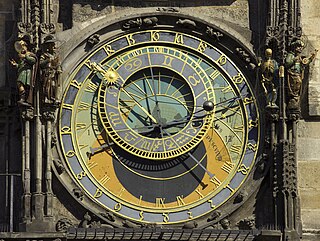 W
WAn astronomical clock, horologium, or orloj is a clock with special mechanisms and dials to display astronomical information, such as the relative positions of the sun, moon, zodiacal constellations, and sometimes major planets.
 W
WAstronomical rings, also known as Gemma's rings, are an early astronomical instrument. The instrument consists of three rings, representing the celestial equator, declination, and the meridian.
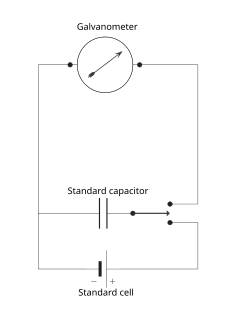 W
WA ballistic galvanometer is a type of sensitive galvanometer; commonly a mirror galvanometer. Unlike a current-measuring galvanometer, the moving part has a large moment of inertia, thus giving it a long oscillation period. It is really an integrator measuring the quantity of charge discharged through it. It can be either of the moving coil or moving magnet type.
 W
WCabinets of curiosities were collections of notable objects. The term cabinet originally described a room rather than a piece of furniture. Modern terminology would categorize the objects included as belonging to natural history, geology, ethnography, archaeology, religious or historical relics, works of art, and antiquities. The classic cabinet of curiosities emerged in the sixteenth century, although more rudimentary collections had existed earlier. In addition to the most famous and best documented cabinets of rulers and aristocrats, members of the merchant class and early practitioners of science in Europe formed collections that were precursors to museums.
 W
WCavallo's multiplier was an early electrostatic influence machine, invented in 1795 by the Anglo-Italian natural philosopher Tiberius Cavallo. Its purpose was to multiply, or amplify, a small electric charge to a level where it was detectable by the insensitive electroscopes of the day. Repeated operation of the device could produce voltages high enough to generate sparks.
 W
WThe grounds of the Palais des Nations contain many fine objects donated by member states of the United Nations, private sponsors and artists. The Celestial Sphere in the Ariana Park of the Palais des Nations is the best-known of these. The huge - over four meter diameter - Celestial Sphere is the chef d'oeuvre of the American sculptor Paul Manship (1885–1966). It was donated in 1939 by the Woodrow Wilson Foundation to what was then the League of Nations building. Known also as the Woodrow Wilson Memorial Sphere of the Palais des Nations it is today a symbol of Geneva International and of Geneva as the centre of dialogue and peace.
 W
WCorbett's electrostatic machine is a high voltage static electricity generating device that was made by Thomas Corbett. It was used by Shaker doctors for medical treatment in the early nineteenth century. The machine consisted of a rotating glass jar that produced an electrical charge by means of a crank wheel that was turned by hand. This charge was stored in a glass container that was released later to a patient for a cure. Corbett's machine is in the collection of the Mount Lebanon Shaker Village in the state of New York USA.
 W
WA Crookes tube is an early experimental electrical discharge tube, with partial vacuum, invented by English physicist William Crookes and others around 1869-1875, in which cathode rays, streams of electrons, were discovered.
 W
WThe term Jacob's staff, also known as cross-staff, a ballastella, a fore-staff, or a balestilha, is used to refer to several things. In its most basic form, a Jacob's staff is a stick or pole with length markings; most staffs are much more complicated than that, and usually contain a number of measurement and stabilization features. The two most frequent uses are:in astronomy and navigation for a simple device to measure angles, later replaced by the more precise sextants; in surveying for a vertical rod that penetrates or sits on the ground and supports a compass or other instrument.
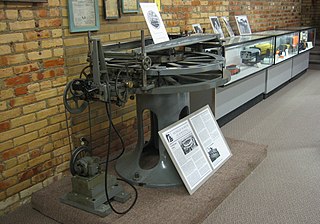 W
WA dividing engine is a device employed to mark graduations on measuring instruments to allow for reading smaller measurements than can be allowed by directly engraving them. The well-known vernier scale and micrometer screw-gauge are classic examples that make use of such graduations.
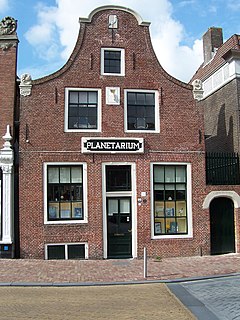 W
WThe Royal Eise Eisinga Planetarium is an 18th-century orrery in Franeker, Friesland, Netherlands. It is currently a museum and open to the public. The orrery has been on the top 100 Dutch heritage sites list since 1990 and in December 2011 was placed on a provisionary list of future UNESCO World Heritage Site candidates. It is the oldest working orrery in the world.
 W
WFor the unrelated Japanese "Electric bath" that involves an actual bath and is still used in Japan, see Sento.
 W
WAn electrophorus or electrophore is a simple manual capacitive electrostatic generator used to produce electrostatic charge via the process of electrostatic induction. A first version of it was invented in 1762 by Swedish professor Johan Carl Wilcke,. Italian scientist Alessandro Volta improved and popularized the device in 1775, and is sometimes erroneously credited with its invention. The word electrophorus was coined by Volta from the Greek ήλεκτρον ('elektron'), and ϕέρω ('phero'), meaning 'electricity bearer'.
 W
WAn electroscope is an early scientific instrument used to detect the presence of electric charge on a body. It detects charge by the movement of a test object due to the Coulomb electrostatic force on it. The amount of charge on an object is proportional to its voltage. The accumulation of enough charge to detect with an electroscope requires hundreds or thousands of volts, so electroscopes are used with high voltage sources such as static electricity and electrostatic machines. An electroscope can only give a rough indication of the quantity of charge; an instrument that measures electric charge quantitatively is called an electrometer.
 W
WAn electrostatic generator, or electrostatic machine, is an electromechanical generator that produces static electricity, or electricity at high voltage and low continuous current. The knowledge of static electricity dates back to the earliest civilizations, but for millennia it remained merely an interesting and mystifying phenomenon, without a theory to explain its behavior and often confused with magnetism. By the end of the 17th century, researchers had developed practical means of generating electricity by friction, but the development of electrostatic machines did not begin in earnest until the 18th century, when they became fundamental instruments in the studies about the new science of electricity. Electrostatic generators operate by using manual power to transform mechanical work into electric energy. Electrostatic generators develop electrostatic charges of opposite signs rendered to two conductors, using only electric forces, and work by using moving plates, drums, or belts to carry electric charge to a high potential electrode. The charge is generated by one of two methods: either the triboelectric effect (friction) or electrostatic induction.
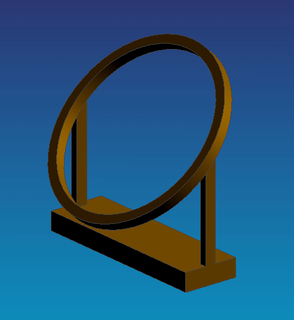 W
WAn equatorial ring was an astronomical instrument used in the Hellenistic world to determine the exact moment of the spring and autumn equinoxes. Equatorial rings were placed before the temples in Alexandria, in Rhodes, and perhaps in other places, for calendar purposes.
 W
WAn equatorium is an astronomical calculating instrument. It can be used for finding the positions of the Moon, Sun, and planets without calculation, using a geometrical model to represent the position of a given celestial body.
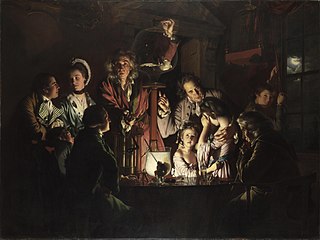 W
WAn Experiment on a Bird in the Air Pump is a 1768 oil-on-canvas painting by Joseph Wright of Derby, one of a number of candlelit scenes that Wright painted during the 1760s. The painting departed from convention of the time by depicting a scientific subject in the reverential manner formerly reserved for scenes of historical or religious significance. Wright was intimately involved in depicting the Industrial Revolution and the scientific advances of the Enlightenment. While his paintings were recognized as exceptional by his contemporaries, his provincial status and choice of subjects meant the style was never widely imitated. The picture has been owned by the National Gallery in London since 1863 and is regarded as a masterpiece of British art.
 W
WA filar micrometer is a specialized eyepiece used in astronomical telescopes for astrometry measurements, in microscopes for specimen measurements, and in alignment and surveying telescopes for measuring angles and distances on nearby objects. The word filar derives from Latin filum 'a thread'. It refers to the fine threads or wires used in the device.
 W
WFranklin bells are an early demonstration of electric charge designed to work with a Leyden jar. Franklin bells are only a qualitative indicator of electric charge and were used for simple demonstrations rather than research. This was the first device that converted electrical energy into mechanical energy in the form of continuous mechanical motion, in this case, the moving of a bell clapper back and forth between two oppositely charged bells.
 W
WFranklin's electrostatic machine is a high-voltage static electricity-generating device used by Benjamin Franklin in the mid-18th century for research into electrical phenomena. Its key components are a glass globe which turned on an axis via a crank, a cloth pad in contact with the spinning globe, a set of metal needles to conduct away the charge developed on the globe by its friction with the pad, and a Leyden jar – a high-voltage capacitor – to accumulate the charge. Franklin's experiments with the machine eventually led to new theories about electricity and inventing the lightning rod.
 W
WA galvanometer is an electromechanical instrument used for detecting and indicating an electric current. A galvanometer works as an actuator, by producing a rotary deflection of a pointer, in response to electric current flowing through a coil in a constant magnetic field. Early galvanometers were not calibrated, but improved devices were used as measuring instruments, called ammeters, to measure the current flowing through an electric circuit.
 W
WAn electroscope is an early scientific instrument used to detect the presence of electric charge on a body. It detects charge by the movement of a test object due to the Coulomb electrostatic force on it. The amount of charge on an object is proportional to its voltage. The accumulation of enough charge to detect with an electroscope requires hundreds or thousands of volts, so electroscopes are used with high voltage sources such as static electricity and electrostatic machines. An electroscope can only give a rough indication of the quantity of charge; an instrument that measures electric charge quantitatively is called an electrometer.
 W
WThe term Jacob's staff, also known as cross-staff, a ballastella, a fore-staff, or a balestilha, is used to refer to several things. In its most basic form, a Jacob's staff is a stick or pole with length markings; most staffs are much more complicated than that, and usually contain a number of measurement and stabilization features. The two most frequent uses are:in astronomy and navigation for a simple device to measure angles, later replaced by the more precise sextants; in surveying for a vertical rod that penetrates or sits on the ground and supports a compass or other instrument.
 W
WThe large electrostatic generator is a large handcrafted electromechanical instrument designed by Martin van Marum and built by John Cuthbertson in 1784 for the Teylers Museum in Haarlem, where it forms the centerpiece of the instrument room. The concept of an electrostatic generator was new, and the battery (array) of leiden jars was the largest ever built. The two glass disks of the generator are 1.65 meters in diameter, and the machine is capable of generating a potential of 330,000 volts.
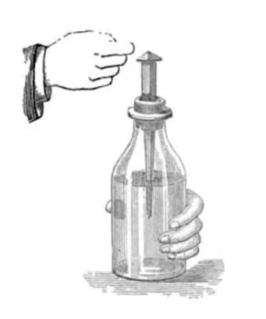 W
WA Leyden jar is an antique electrical component which stores a high-voltage electric charge between electrical conductors on the inside and outside of a glass jar. It typically consists of a glass jar with metal foil cemented to the inside and the outside surfaces, and a metal terminal projecting vertically through the jar lid to make contact with the inner foil. It was the original form of the capacitor.
 W
WThe Magdeburg hemispheres are a pair of large copper hemispheres, with mating rims. They were used to demonstrate the power of atmospheric pressure. When the rims were sealed with grease and the air was pumped out, the sphere contained a vacuum and could not be pulled apart by teams of horses. The Magdeburg hemispheres were invented by German scientist and mayor of Magdeburg, Otto von Guericke, to demonstrate the air pump that he had invented, and the concept of atmospheric pressure. The first artificial vacuum had been produced a few years earlier by Evangelista Torricelli, and had inspired Guericke to design the world's first vacuum pump, which consisted of a piston and cylinder with one-way flap valves. The hemispheres became popular in physics lectures as an illustration of the strength of air pressure, and are still used in education. The original hemispheres are on display in the Deutsches Museum in Munich.
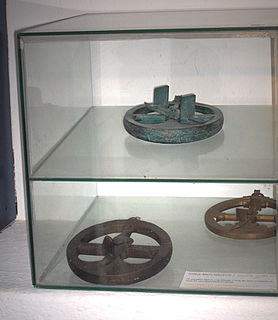 W
WThe mariner's astrolabe, also called sea astrolabe, was an inclinometer used to determine the latitude of a ship at sea by measuring the sun's noon altitude (declination) or the meridian altitude of a star of known declination. Not an astrolabe proper, the mariner's astrolabe was rather a graduated circle with an alidade used to measure vertical angles. They were designed to allow for their use on boats in rough water and/or in heavy winds, which astrolabes are ill-equipped to handle. In the sixteenth century, the instrument was also called a ring.
 W
WMaxwell’s thermodynamic surface is an 1874 sculpture made by Scottish physicist James Clerk Maxwell (1831–1879). This model provides a three-dimensional space of the various states of a fictitious substance with water-like properties. This plot has coordinates volume (x), entropy (y), and energy (z). It was based on the American scientist Josiah Willard Gibbs’ graphical thermodynamics papers of 1873. The model, in Maxwell's words, allowed "the principal features of known substances [to] be represented on a convenient scale."
 W
WA mural instrument is an angle measuring device mounted on or built into a wall. For astronomical purposes, these walls were oriented so they lie precisely on the meridian. A mural instrument that measured angles from 0 to 90 degrees was called a mural quadrant. They were utilized as astronomical devices in ancient Egypt and ancient Greece. Edmond Halley, due to the lack of an assistant and only one vertical wire in his transit, confined himself to the use of a mural quadrant built by George Graham after its erection in 1725 at the Royal Observatory, Greenwich. Bradley's first observation with that quadrant was made on 15 June 1742.
 W
WA nocturnal is an instrument used to determine the local time based on the relative positions of two or more stars in the night sky. Sometimes called a horologium nocturnum or nocturlabe, it is related to the astrolabe and sundial. Knowing the time is important in piloting for calculating tides and some nocturnals incorporate tide charts for important ports.
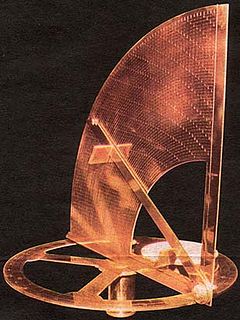 W
WNonius is a measuring tool used in navigation and astronomy named in honour of its inventor, Pedro Nunes, a Portuguese author, mathematician and navigator. The nonius was created in 1542 as a system for taking finer measurements on circular instruments such as the astrolabe. The system was eventually adapted into the Vernier scale in 1631 by the French mathematician Pierre Vernier.
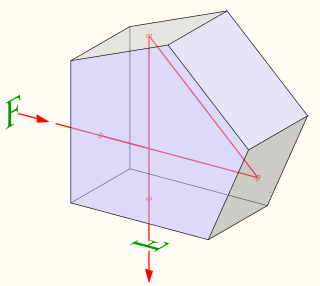 W
WThe optical square uses a pentaprism to reflect and refract a beam or sighting 90 degrees, it is used in pairs in surveying and in a singular block in metrology.
 W
WAn orrery is a mechanical model of the Solar System that illustrates or predicts the relative positions and motions of the planets and moons, usually according to the heliocentric model. It may also represent the relative sizes of these bodies; however, since accurate scaling is often not practical due to the actual large ratio differences, a subdued approximation may be used instead. Though the Greeks had working planetaria, the first orrery that was a planetarium of the modern era was produced in 1704, and one was presented to Charles Boyle, 4th Earl of Orrery – hence the name. They are typically driven by a clockwork mechanism with a globe representing the Sun at the centre, and with a planet at the end of each of the arms.
 W
WThe Passemant astronomical clock is an astronomical clock designed by Claude-Simeon Passemant in the eighteenth century. It is displayed in the Salon de la pendule in the petit appartement du roi on the first floor of Versailles, France. The clock set the official time in France for the first time in the kingdom's history.
 W
WA Philosopher Lecturing on the Orrery, or the full title, A Philosopher giving that Lecture on the Orrery in which a lamp is put in place of the Sun, is a 1766 painting by Joseph Wright of Derby depicting a lecturer giving a demonstration of an orrery — a mechanical model of the solar system — to a small audience. It is now in the Derby Museum and Art Gallery The painting preceded his similar An Experiment on a Bird in the Air Pump.
 W
WThe post office box was a Wheatstone bridge-style testing device with pegs and spring arms to close electrical circuits and measure properties of the circuit under test.
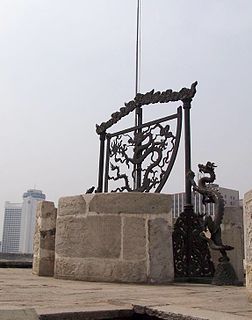 W
WA quadrant is an instrument that is used to measure angles up to 90°. Different versions of this instrument could be used to calculate various readings, such as longitude, latitude, and time of day. It was originally proposed by Ptolemy as a better kind of astrolabe. Several different variations of the instrument were later produced by medieval Muslim astronomers.
 W
WThe Ramsden surveying instruments are those constructed by Jesse Ramsden and used in high precision geodetic surveys carried out in the period 1784 to 1853. This includes the five great theodolites—great in name, great in size and great in accuracy—used in surveys of Britain and other parts of the world. Ramsden also provided the equipment used in the measurement of the many base lines of these surveys and also the zenith telescope used in latitude determinations.
 W
WThe rectangulus was an astronomical instrument made by Richard of Wallingford around 1326. Dissatisfied with the limitations of existing astrolabes, Richard developed the rectangulus as an instrument for spherical trigonometry and to measure the angles between planets and other astronomical bodies. This was one of a number of instruments he created, including the Albion, a form of equatorium, and a famously complicated and expensive horologium.
 W
WA dividing engine is a device employed to mark graduations on measuring instruments to allow for reading smaller measurements than can be allowed by directly engraving them. The well-known vernier scale and micrometer screw-gauge are classic examples that make use of such graduations.
 W
WA sundial is a device that tells the time of day when there is sunlight by the apparent position of the Sun in the sky. In the narrowest sense of the word, it consists of a flat plate and a gnomon, which casts a shadow onto the dial. As the Sun appears to move across the sky, the shadow aligns with different hour-lines, which are marked on the dial to indicate the time of day. The style is the time-telling edge of the gnomon, though a single point or nodus may be used. The gnomon casts a broad shadow; the shadow of the style shows the time. The gnomon may be a rod, wire, or elaborately decorated metal casting. The style must be parallel to the axis of the Earth's rotation for the sundial to be accurate throughout the year. The style's angle from horizontal is equal to the sundial's geographical latitude.
 W
WThe shadow square, also known as an altitude scale, was an instrument used to determine the linear height of an object, in conjunction with the alidade, for angular observations. It was invented by Muhammad ibn Mūsā al-Khwārizmī in 9th-century Baghdad. Shadow squares are often found on the backs of astrolabes.
 W
WThe slide rule, also known colloquially in the United States as a slipstick, is a mechanical analog computer. As graphical analog calculators, slide rules are closely related to nomograms, but the former are used for general calculations, whereas the latter are used for application-specific computations.
 W
WIn the late 1800s, telegraphy was developing as a way for distant communication. Messages were converted to dots and dashes that were sent as electric pulses and could be converted to sound or visual signals at the distant site. That conversion was done by a coil in a galvanometer, which had a limited frequency. Clément Adair, a French engineer, replaced the coil with a much faster wire or "string" producing the first string galvanometer. Augustus Waller had discovered electrical activity from the heart and produced the first electrocardiogram in 1887. But his equipment was slow. Physiologists worked to find a better instrument. In 1901, Willem Einthoven described the science background and potential utility of a string galvanometer, stating "Mr. Adair as already built an instrument with a wires stretched between poles of a magnet. It was a telegraph receiver." Although Einthoven is sometimes credited with inventing it, he did not invent the string galvanometer. He was a leader in applying the string galvanometer to physiology and medicine, leading to today's electrocardiography. Einthoven was awarded the 1924 Nobel prize in Physiology or Medicine for his work.
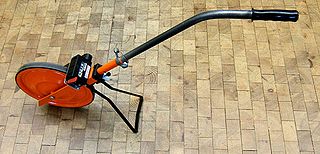 W
WA surveyor's wheel, also called a clickwheel, hodometer, waywiser, trundle wheel, measuring wheel or perambulator is a device for measuring distance.
 W
WThe thermo-galvanometer is an instrument for measuring small electric currents. It was invented by William Duddell about 1900. The following is a description of the instrument taken from a trade catalog of Cambridge Scientific Instrument Company dated 1905: For a long time the need of an instrument capable of accurately measuring small alternating currents has been keenly felt. The high resistance and self-induction of the coils of instruments of the electro-magnetic type frequently prevent their use. Electro-static instruments as at present constructed are not altogether suitable for measuring very small currents, unless a sufficient potential difference is available. The thermo-galvanometer designed by Mr W. Duddell can be used for the measurement of extremely small currents to a high degree of accuracy. It has practically no self-induction or capacity and can therefore be used on a circuit of any frequency and currents as small as twenty micro-amperes can be readily measured by it. It is equally correct on continuous and alternating currents. It can therefore be accurately standardized by continuous current and used without error on circuits of any frequency or wave-form. The principle of the thermo-galvanometer is simple. The instrument consists of a resistance which is heated by the current to be measured, the heat from the resistance falling on the thermo-junction of a Boys radio-micrometer. The rise in temperature of the lower junction of the thermo-couple produces a current in the loop which is deflected by the magnetic field against the torsion of the quartz fibre.
 W
WThe torquetum or turquet is a medieval astronomical instrument designed to take and convert measurements made in three sets of coordinates: Horizon, equatorial, and ecliptic. It is said to be a combination of Ptolemy's astrolabon and the plane astrolabe. In a sense, the torquetum is an analog computer.
 W
WTransversals are a geometric construction on a scientific instrument to allow a graduation to be read to a finer degree of accuracy. Transversals have been replaced in modern times by vernier scales. This method is based on the Intercept theorem.
 W
WThe triquetrum was the medieval name for an ancient astronomical instrument first described by Ptolemy in the Almagest. Also known as Parallactic Rulers, it was used for determining altitudes of heavenly bodies. Ptolemy calls it a "parallactic instrument" and seems to have used it to determine the zenith distance and parallax of the Moon.
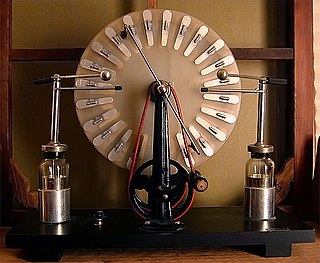 W
WThe Wimshurst influence machine is an electrostatic generator, a machine for generating high voltages developed between 1880 and 1883 by British inventor James Wimshurst (1832–1903).